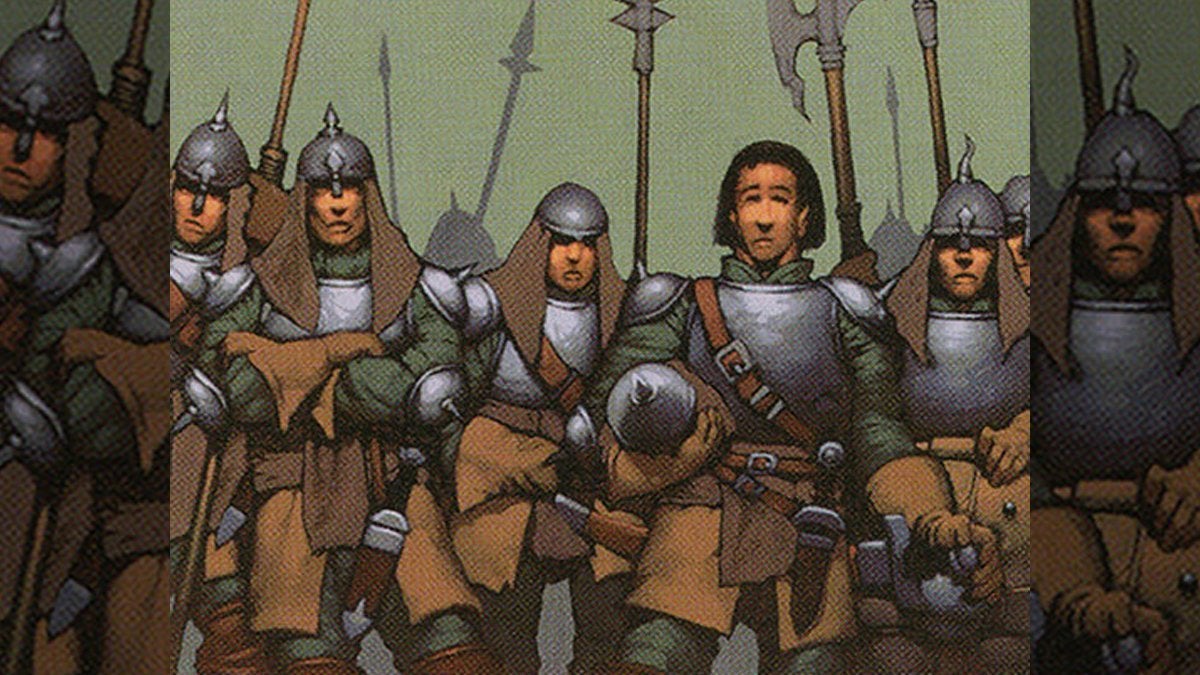![]() Key Takeaway
Key Takeaway
Banding in Magic: The Gathering is a static ability that lets creatures attack and block together as a single unit while still being separate permanents.
A player who is attacking with a band divides the blocking creature’s power amongst their banded creatures’ toughness values however they like.
Additionally, a blocking player can choose how the attacking creature’s power gets distributed as damage among the toughness values of the blocking band of creatures.
Banding in Magic: The Gathering is an ability that was abandoned over 25 years ago due to being needlessly confusing. These days, you’ll only see this ability when playing in tiers that feature Alpha set cards. Let’s get into what Banding does and why it was left in the past.
Table Of Contents
What Is Banding?
Banding in Magic: The Gathering is a static ability that lets creatures attack and block together as a single unit. However, the power and toughness of each creature in a band remain independent of one another. You must declare which creatures are banded together during the beginning of the combat phase.
The creatures making up a band do not share abilities—they are still different permanents. A creature can only be part of one band at a time, and a band stays together until the end of combat. Afterward, the band separates and returns to acting like individual creatures.
The idea is that a few creatures can form a small squad that confronts challenges together. While interesting in concept, the mechanics surrounding this ability are convoluted.
How Banding Works During Attacks
When attacking, a creature with Banding can attack alongside other creatures that have Banding and up to one other creature that doesn’t. When “banded,” the group of creatures mostly acts as one creature. As such, this band can only attack a single target at a time (the opposing player, a planeswalker, or a battle). Keep in mind that the power of each creature in a band gets applied as damage to the same target in a successive manner—not all at once.
If blocked by an opponent’s creature, that blocking creature has to block all of the banded creatures. During such a block, the player who is attacking with a band divides the blocking creature’s power amongst their banded creatures’ toughness values however they like. If one member of a band becomes blocked, the entire band gets blocked.
How Banding Works During Blocks
When blocking, a creature with Banding can block together with other creatures that have Banding and up to one other that doesn’t. This allows the band to block as a single unit. As the attacker deals damage during the combat phase, the blocking player can choose how the attacking creature’s power gets distributed as damage among the toughness values of the blocking band of creatures.
How Bands With [Quality] Works
There are times when, instead of Banding, you’ll see “bands with other [quality].” Examples of this would be “bands with other Wolves of the Hunt” and “bands with other Dinosaurs.” Such abilities work the same as Banding, but only with the specified creature type and up to one other non-banding creature of any creature type.
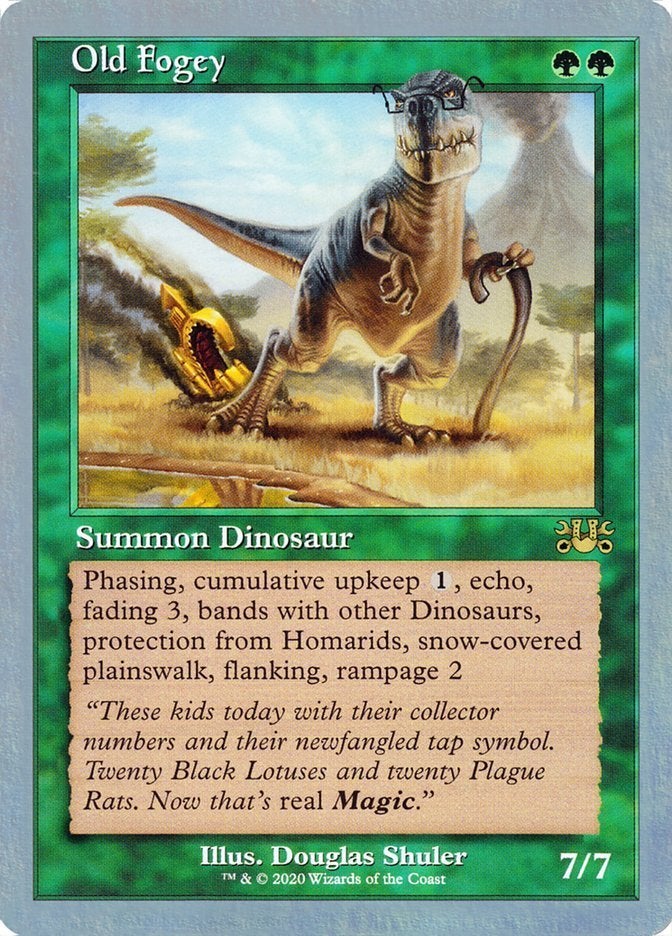
How do Abilities Work With Banding?
Since creatures in a band do not share abilities, you can compartmentalize this part of Banding mechanics. Let’s say there are two creatures in a band: one with Flying and another with Trample.
When this band attacks, the defending player can only block the band if they have a creature with Flying or Reach. Also, when the defending player blocks, if their blocking creature has less toughness than the Trample creature’s power in the band, the excess power of the Trample creature gets applied to the defending player as damage.
The power of the Flying creature in the band cannot apply excess damage to the defending player. Also, the Trample creature can be blocked by a creature without Flying or Reach—but only if the band it’s a part of gets initially blocked by a creature with Flying or Reach.
In such a case, the defending player can block the band with two creatures: one that has Flying or Reach and one that doesn’t. Although this is the case, if the attacking player uses a band, they can still assign damage however they want.
How to Use Banding
You’re unlikely to see cards with Banding outside of the Historic Format. With that said, we’ll still give you some examples so that you’ll be prepared if you ever face off against a deck that features Banding.
Example of Banding Used During an Attack
Let’s say you’re attacking with a band consisting of a Noble Elephant and a Icatian Phalanx and your opponent blocks with a Craw Wurm.
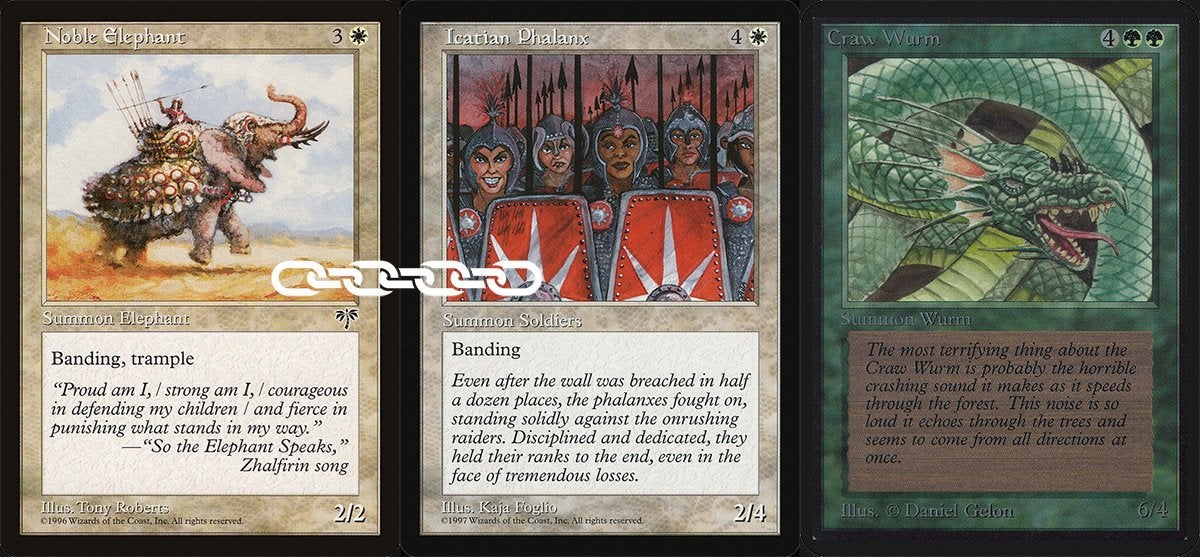
During damage calculations, since Craw Wurm has 6 power, you can divide it among your band’s creatures. However, since the creatures in your band only have 6 toughness between them, both of your creatures get destroyed due to you being unable to divide Craw Wurm’s power in a way that results in your creatures getting past the damage calculations with more than 0 toughness.
Next, Craw Wurm also gets destroyed, as it only has 4 toughness. Both of the creatures in your band have 2 power each, so, regardless of who you choose to apply damage first, the total of 4 damage still gets applied to Craw Wurm.
Sadly, Noble Elephant’s Trample does nothing here since there’s no power overflow after destroying Craw Wurm. With that said, if you cast an instant that increases Noble Elephant’s power, any increase will allow Trample to trigger. In such a case, make sure to get Noble Elephant to apply its damage counters after Icatian Phalanx for greater damage to the opposing player.
In the above example, this combat phase leads to a stalemate resulting in both sides losing creatures involved in this confrontation.
Example of Banding Used During a Block
For blocking, let’s pretend that you have a Mishra’s War Machine and a Kjeldoran Escort under your control and your opponent has an Earth Elemental—which is attacking.
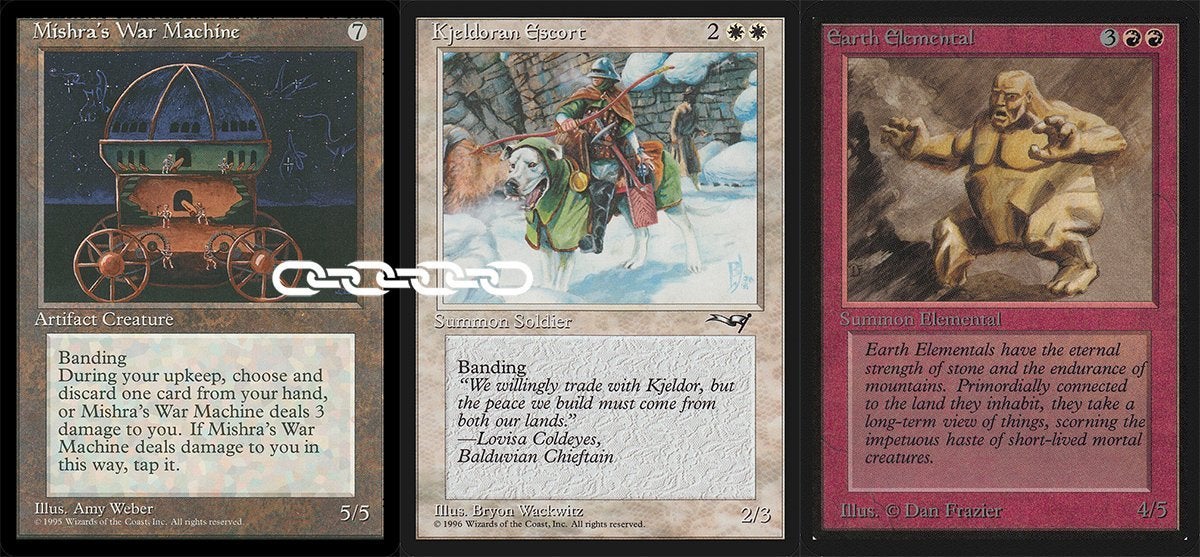
You could block with Mishra’s War Machine alone to successfully defend against Earth Elemental’s attack. However, your opponent could have an instant up their sleeve that increases Earth Elemental’s power. In this case, banding your Mishra’s War Machine and Kjeldoran Escort together can preemptively foil your opponent’s plans.
As such, the damage calculations unfold like this: you use Mishra’s War Machine’s 5 toughness to block Earth Elemental’s 4 power, which leaves your war machine with 1 toughness. In addition, Earth Elemental gets destroyed after losing its 5 toughness to Mishra’s War Machine’s 5 power (unless your opponent increases the elemental’s power or toughness with an instant).
This leaves Kjeldoran Escort untouched—but you have them ready in case your opponent casts a sneaky power-up instant on Earth Elemental. For the sake of explanation, let’s say that happens: your opponent casts Aggressive Urge right before damage calculations.
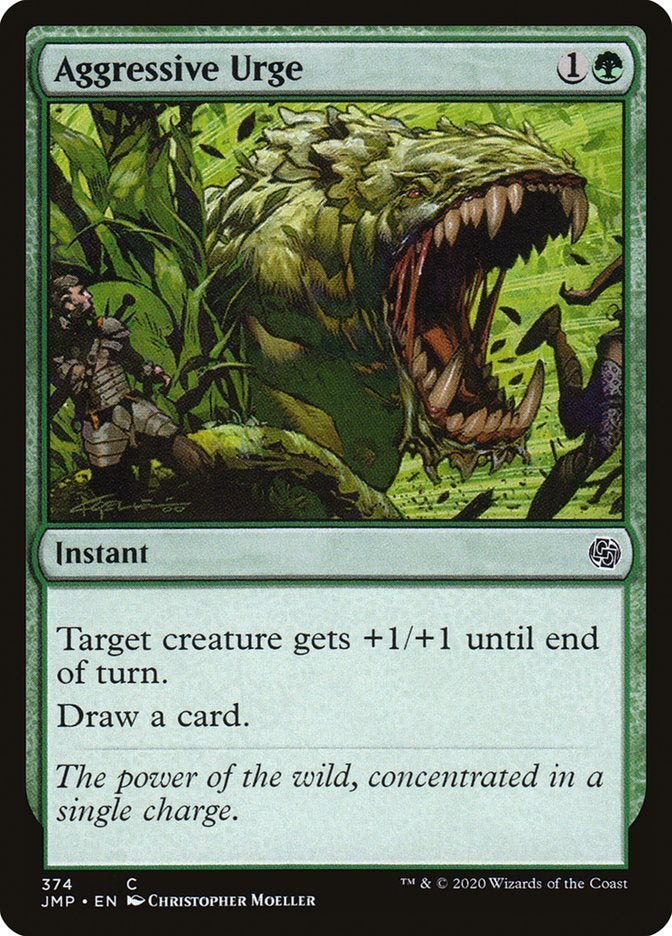
Now, Earth Elemental is at 5/6—which means that Mishra’s War Machine can’t destroy it upon blocking. However, Mishra’s War Machine doesn’t need to get destroyed when part of the same band as Kjeldoran Escort.
You can divide Earth Elemental’s 5 power so that Mishra’s War Machine takes 3 damage and Kjeldoran Escort takes 2. Also, now that Kjeldoran Escort is involved in combat, its power also gets subtracted from Earth Elemental’s toughness. Due to Mishra’s War Machine and Kjeldoran Escort having 7 combined power, this drops the attacking Earth Elemental’s toughness to -1—which means it gets destroyed.
How to Counter Banding
You shouldn’t try to face bands with non-banded creatures. The best counter to Banding is to use sorceries, instants, and abilities to deal non-combat damage to creatures that have Banding. Since Banding is a static ability that only triggers during the combat phase (in most cases), you can target and destroy creatures with this ability outside of combat as you would any other creature.
Alternatively, if your deck is running Banding creatures as well, you can block and attack bands with your own bands. Unfortunately…there doesn’t seem to be anything in the Comprehensive Rules about what happens when a band attacks or blocks another band. As such, you can potentially use your charisma to convince a judge to rule in your favor during scenarios like this. It’s not the most guaranteed counter, but it can still work!
No wonder this ability was abandoned—what a mind-bender! There are few abilities as confusing as Banding in Magic: The Gathering. Even professional players were uncertain how it worked back in the ’90s.
Thankfully, MTG has come a long way with its abilities and rulings. Nowadays, there are comparatively straightforward abilities like Vigilance and Menace that you can use in a variety of ways. However, this doesn’t mean that MTG has become easier…just easier to understand…most of the time.


